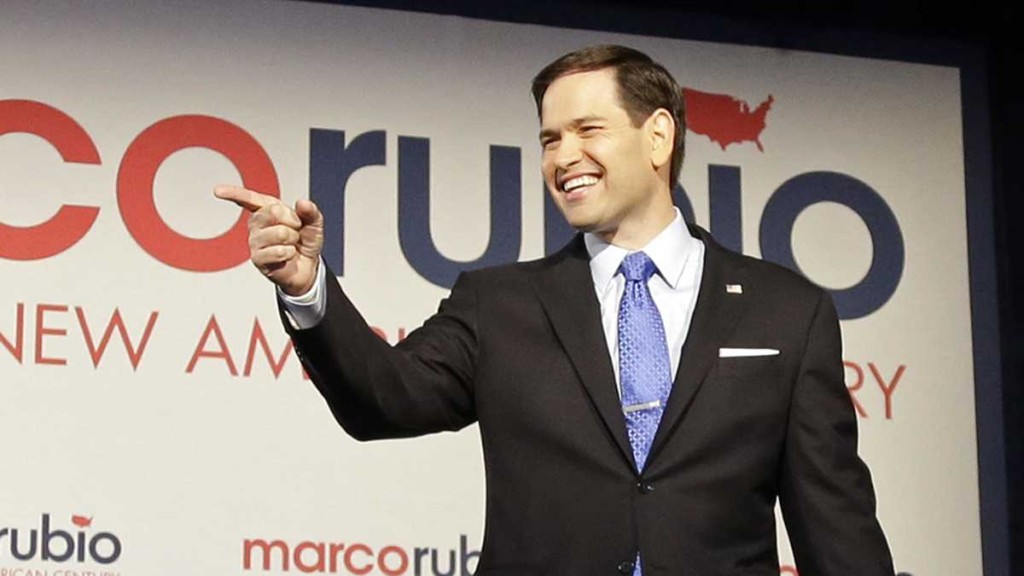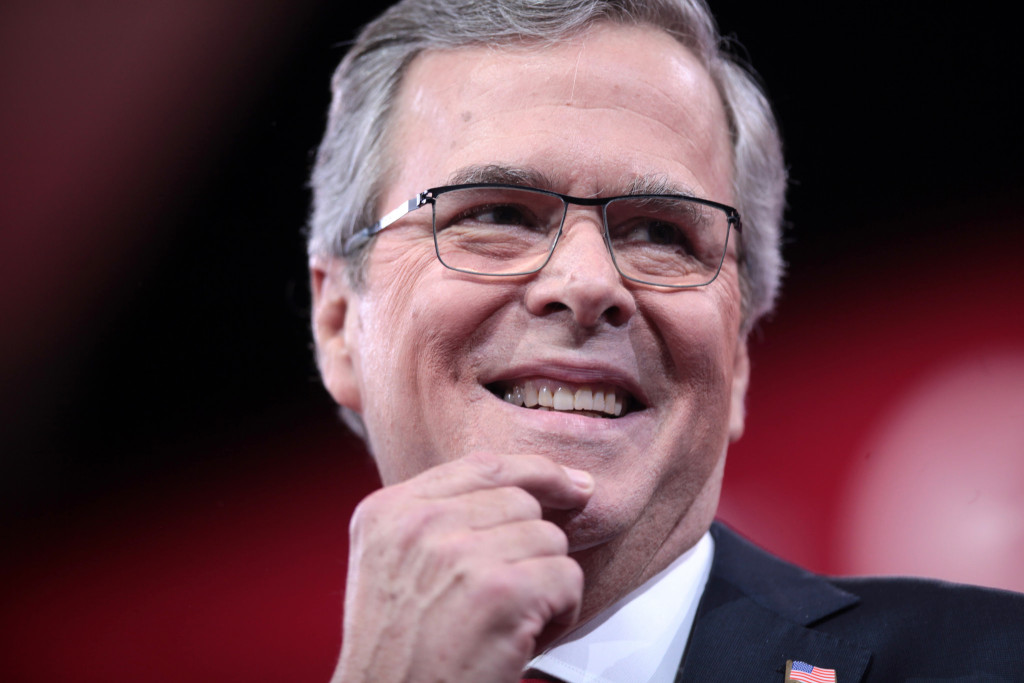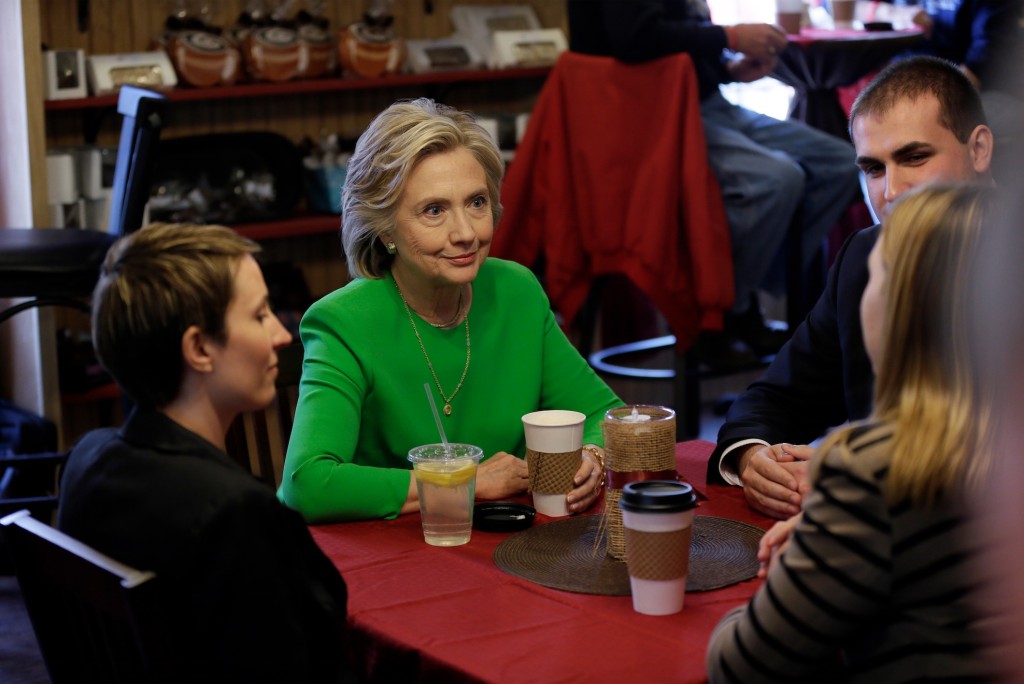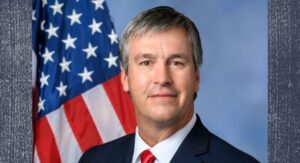Not long ago, Marco Rubio questioned his own readiness for presidency

Marco Rubio lacks the experience to be president and Jeb Bush is a brilliant man ready for the job. So said Marco Rubio. Thing is, that was Rubio a few years ago, a man of seeming humility who joked that the only thing he deserved being president of was a condo association. He dismissed in colorful terms the idea that one term in the Senate could make a man ready for the White House. “Everyone I’ve ever known that tries to use their position as a stepping stone for something else has ended up destroying themselves,” he said during a 2012 book tour. Times — and ambition and ego — have changed. Bush, the former governor who guided Rubio’s early political career, won Rubio’s praise as “one of the biggest, best thinkers in the Republican Party” with an “amazing” depth of knowledge on almost every issue. Now Rubio says America doesn’t need politicians from the past. After shooing off the roars of supporters in his 2010 Senate campaign who saw presidential mettle in him — “it’s fleeting and it’s not going to get to my head” — it’s now firmly in his head. He’s hardly the first to be seized with the audacity of presidential hopes, even if others have taken a bit longer to get from you-must-be-kidding to yes-we-can. Barack Obama‘s star turn at the 2004 convention, just two years after being elected to the Senate from a background as a state lawmaker, made clear that the White House was in that young man’s eyes. Few, though, have put down their own bona fides as thoroughly as Rubio did in his rough-and-tumble Senate campaign, when he wanted voters to know that a Senate seat was his total dream and devotion. Then, he was stunned to be recognized at a Florida Panhandle truck stop while making a 400-mile round-trip drive so he could talk to 80 voters. The trip cost him as much as he raised in campaign contributions. Republican leaders in Tallahassee and Washington were trying to force him out of the race and have him run for attorney general so then-Republican Gov. Charlie Crist could have a clean shot at the nomination. “It was unpleasant,” Rubio said at the time, “but I’m glad it happened because it forced me to answer a very simple question to myself and that is, why are you doing this?” He decided “I’m in this because I want to do something.” Rubio began the Senate race 31 points down in polls. Crist was raising $13 for every $1 Rubio took in. But Rubio used Tea Party rallies, the image of Crist embracing Obama and a well-delivered conservative message to top Crist by 20 points and drive him from the party. Along the way he’d poke fun at Obama’s sudden rise to power — a way of playing down suggestions that he could do the same. Like Rubio, Obama announced his presidential plans during his first Senate term. He cracked at one Senate campaign stop that he was running because he wanted a Nobel Peace Prize, “but you’ve got to be in office two weeks to do that, so I’m going to have to wait.” Obama got the prize his first year in office, the Nobel committee citing his support for multilateral diplomacy and for a world without nuclear weapons. The night Rubio won his seat, supporters roared when a speaker asked them if they wanted to see Rubio run for president. The next day Rubio pushed aside that talk. “Politics is full of one-hit wonders,” Rubio told reporters. “The truth is soon you will all go off and cover something else and there will be somebody else out there who’s the flavor of the month, and then I’m still going to be a U.S. senator.” Two years later at a Panama City book signing, a man approached Rubio and said he should run for president in 2016. Rubio dismissed the idea afterward, and pointed to Bush instead. “It’s just amazing to me the depth of knowledge that he has on virtually any issue from foreign relations to the economy and obviously education,” he said. Yet right after the 2012 election, Rubio was the first of the 2016 prospects to visit Iowa. His conviction that he’s ready for the presidency did not develop overnight. Now, Rubio calls on voters to break with leaders of the last century. And his goals are much more ambitious than being a condo association president. Republished with permission of The Associated Press.
Obama’s trade agenda draws GOP support in U.S. House
Legislation to strengthen President Barack Obama‘s hand for a new round of trade deals advanced Thursday in the U.S. House of Representatives courtesy of Republicans and over the protests of Democrats, a political role reversal that portends a bruising struggle over passage later this spring. The vote was 25-13 in the House Ways and Means Committee as pro-business Republicans outpolled labor-aligned Democrats. It was the second straight day the GOP-controlled Congress voted handed Obama a victory on trade. The Senate Finance Committee approved a nearly identical bill Thursday night that would allow lawmakers to vote yes or no without making changes in trade deals, like the one now taking shape among Pacific Rim trading partners. “They’re waiting for this to put their best offers on the table,” Republican U.S. Rep. Paul Ryan of Wisconsin, the House committee chairman, said of negotiating partners that include Japan, Singapore, Chile and Peru. The president put in a plug for the legislation while speaking dismissively of its critics. “When people say this trade deal is bad for working families, they don’t know what they’re talking about,” Obama told activists and donors with Organizing for Action, a group with roots in his presidential campaigns. Democrats said the legislation didn’t go far enough to assure labor standards and environmental protections strong enough to avoid placing American companies at a disadvantage, and said failure to prohibit currency manipulation abroad would cost U.S. workers their jobs. “Currency manipulation has caused more job loss than anything else connected to trade,” said Rep. Sander Levin of Michigan, the senior Democrat on the panel. But the Democrats’ attempt to substitute their own legislation — weakening Obama’s powers — was ruled out of order by Republicans on grounds that it exceeded the committee’s jurisdiction. As a result, no vote was taken on it. It would have set up a congressional committee with authority to decide if any trade deal had met negotiating objectives, taking the power away from Obama. Unlike the White House-backed measure, it would only have applied to the Trans-Pacific Partnership talks, and not to other possible deals over the next six years. In addition to trade talks involving countries bordering the Pacific, the administration is involved in negotiations toward a TransAtlantic Trade and Investment Partnership with the European Union and a Trade in Services Agreement with dozens of countries. Trade legislation is a perennial political irritant for Democrats, never more than now, given the post-recession political fault lines that have developed on the issue of income disparity. Democratic U.S. Rep. Nancy Pelosi of California, the party’s leader in the House, declined to say whether she supports the legislation. At a news conference, she said: “At the end of the day, you weigh the equities. Is this better than the status quo? How much better? Or is it a wasted opportunity? And right now, I’m disappointed.” She suggested that if the White House and Republicans fail to produce a majority for the measure, it would increase Democratic leverage to seek changes. Former Secretary of State Hillary Rodham Clinton, campaigning for the Democratic presidential nomination this week in New Hampshire, similarly declined to state a position. Some Democrats have been far less reluctant, though. Democratic U.S. Sen. Elizabeth Warren of Massachusetts, a persistent critic of large corporations, has engaged in something of a long-range debate with Obama over the subject in recent days. The House legislation is nearly identical to a bill that cleared the Senate Finance Committee on a bipartisan 20-6 vote. Seven of that panel’s 13 Democrats supported the bill. Sen. Richard Burr of North Carolina was the only Republican to oppose it. In the House committee, all Republicans joined with Democratic Reps. Earl Blumenauer of Oregon and Ron Kind of Wisconsin in supporting the bill. Republished with permission of The Associated Press.
Jeb Bush preparing to delegate many campaign tasks to super PAC

Jeb Bush is preparing to embark on an experiment in presidential politics: delegating many of the nuts-and-bolts tasks of seeking the White House to a separate political organization that can raise unlimited amounts of campaign cash. The concept, in development for months as the former Florida governor has raised tens of millions of dollars for his Right to Rise super PAC, would endow that organization not just with advertising on Bush’s behalf, but with many of the duties typically conducted by a campaign. Should Bush move ahead as his team intends, it is possible that for the first time a super PAC created to support a single candidate would spend more than the candidate’s campaign itself — at least through the primaries. Some of Bush’s donors believe that to be more than likely. The architects of the plan believe the super PAC’s ability to legally raise unlimited amounts of money outweighs its primary disadvantage, that it cannot legally coordinate its actions with Bush or his would-be campaign staff. “Nothing like this has been done before,” said David Keating, president of the Center for Competitive Politics, which opposes limits on campaign finance donations. “It will take a high level of discipline to do it.” The exact design of the strategy remains fluid as Bush approaches an announcement of his intention to run for the Republican nomination in 2016. But at its center is the idea of placing Right to Rise in charge of the brunt of the biggest expense of electing Bush: television advertising and direct mail. Right to Rise could also break into new areas for a candidate-specific super PAC, such as data gathering, highly individualized online advertising and running phone banks. Also on the table is tasking the super PAC with crucial campaign endgame strategies: the operation to get out the vote and efforts to maximize absentee and early voting on Bush’s behalf. The campaign itself would still handle those things that require Bush’s direct involvement, such as candidate travel. It also would still pay for advertising, conduct polling and collect voter data. But the goal is for the campaign to be a streamlined operation that frees Bush to spend less time than in past campaigns raising money, and as much time as possible meeting voters. Bush’s plans were described to The Associated Press by two Republicans and several Bush donors familiar with the plan, who spoke on condition of anonymity because the former Florida governor has not yet announced his candidacy. “This isn’t the product of some genius thinking,” said a Republican familiar with the strategy. “This is the natural progression of the rules as they are set out by the FEC.” Bush spokeswoman Kristy Campbell said: “Any speculation on how a potential campaign would be structured, if he were to move forward, is premature at this time.” The strategy aims to take maximum advantage of the new world of campaign finance created by a pair of 2010 Supreme Court decisions and counts on the Federal Election Commission to remain a passive regulator with little willingness to confront those pushing the envelope of the law. One reason Bush’s aides are comfortable with the strategy is because Mike Murphy, Bush’s longtime political confidant, would probably run the super PAC once Bush enters the race. Meanwhile, David Kochel, a former top adviser to Mitt Romney‘s campaigns and an ally of Bush senior adviser Sally Bradshaw, would probably be the pick to lead Bush’s official campaign. “Every campaign is going to carefully listen to the lawyers as to what is the best way to allocate their resources and how to maximize them,” said Al Cardenas, former chairman of the American Conservative Union and a Bush adviser. “Nobody wants to relinquish any advantage.” For Bush, the potential benefits are enormous. Campaigns can raise only $2,700 per donor for the primary and $2,700 for the general election. But super PACs are able to raise unlimited cash from individuals, corporations and groups such as labor unions. In theory, that means a small group of wealthy Bush supporters could pay for much of the work of electing him by writing massive checks to the super PAC. Bush would begin a White House bid with confidence that he will have the money behind him to make a deep run into the primaries, even if he should stumble early and spook small-dollar donors, starving his own campaign of the money it needs to carry on. Presidential candidates in recent elections have also spent several hours each day privately courting donors. This approach would not eliminate that burden for Bush, but would reduce it. “The idea of a super PAC doing more … means the candidate has to spend less time raising money and can spend more time campaigning,” said longtime Mitt Romney adviser Ron Kaufman, who supports Bush. The main limitation on super PACs is that they cannot coordinate their activities with a campaign. The risk for Bush is that his super PAC will not have access to the candidate and his senior strategists to make pivotal decisions about how to spend the massive amount of money it will take to win the Republican nomination and, if successful, secure the 270 electoral votes he will need to follow his father and brother into the White House. “The one thing you give away when you do that is control,” Kaufman said. Bush will also be dogged by advocates of campaign finance regulation. The Campaign Legal Center, which supports aggressive regulation of money and politics, has already complained to the FEC that Bush is currently flouting the law by raising money for his super PAC while acting like a candidate for president. Others are on guard, too. “In our view, we are headed for an epic national scandal,” said Fred Wertheimer, president of the pro-regulation group Democracy 21. “We intend to carefully and closely monitor all the candidates and their super PACs, because they will eventually provide numerous examples of violations.” All of the major candidates for president
Ann Eubank: Why the Senate should pass SB101 rejecting Common Core

One of the biggest frauds ever perpetrated on the American people is the Common Core State Standards Initiative. There could be nothing farther from the truth than the assertion that proponents constantly use “that it was state-led.” The standards actually were written by five people in a back room, led by David Coleman of Achieve, who has a degree in philosophy but no classroom experience. Instead of raising academic standards as it was touted to do, it was designed by statists inside the federal education bureaucracy to be one great big sociology experiment on our children. What accounts for Common Core Standards being accepted by 45 states are not actual facts that prove that they were “rigorous,” or that they led to “critical thinking,” but instead by a great deal of money from the Race to the Top Federal grants and wealthy private corporatists. Republican governors were suckered into adopting CCSS by the Department of Education dangling the proverbial carrot of money only if they agreed to 1) accept a common set of standards, 2) implement charter schools, and 3) set up a data collection system. At a time of severe financial crisis in many states, any money source was acceptable regardless of requirements. Very few states actually received money to help implement the standards. The main draw for the states was the illegal No Child Left Behind (NCLB) Waiver. The onerous NCLB annual yearly progress goals were due and a big percentage of states were going to be penalized millions of education dollars they could not afford. So, they signed on the bottom line, “sight unseen.” Most signed on before the standards were even written. The National Governors Association and the Council of Chief State School Officers own and have a copyright on the Common Core State Standards. Contrary to frequent statements that our state could change the standards to become “Alabama standards,” not much “modification” could be done to them. Each state was allowed a 15 percent addition to the standards. However, this 15 percent would not be tested on the required national assessments. After all, if each state’s standards varied 15 percent how could they be “common” to the entire nation? All across the United States the Common Core State Standards are a failure in both implementation and assessment. That has spawned stop Common Core groups in every state. Countless academics have speculated that it will slow learning by two years. I wonder, is that why President Barack Obama now wants two years of community college to be free? Are we just extending high school to recover the length of the time lost with the implementation of Common Core? There are now more than 20 states that have either passed, or are attempting to pass bills in their respective state legislatures to withdraw from the Common Core State Standards. Alabama is one of them. Our parents and teachers, who are brave enough to go against the culture of intimidation, are fighting for their children’s minds. Supporters commonly misrepresent the fact that parents support high academic standards and therefore they support Common Core. Parents do support high standards for our children; however, a majority of parents at this point do not support CCSSI. Standards and assessments drive the curriculum, materials and textbooks. Parents are often shocked at their content. They are appalled at what their children are learning in the classroom and the homework they are bringing home. That’s why it’s so important that the Alabama State Senate takes up and passes Senate Bill 101 repealing Common Core Standards in Alabama. The only way is for Republicans to return to their conservative roots and repeal the Common Core State Standards, and then put a stop to the Department of Education from interfering with the local control of education. That’s why I encourage everyone to write and call their state senator: Tell them they must pass Senate Bill 101 to repeal Common Core and restore common sense to education. Ann Eubank is co-chair of Rainy Day Patriots (Jefferson/Shelby County), and the legislative chair of the Alabama Legislative Watchdogs. Ann is a frequent visitor of the statehouse and has bridged the gap between strong advocate and respected resource for members. She is also a member of the Alabamians United for Excellence in Education Taskforce and several other Stop Common Core groups.
A presidential candidate again, Hillary Clinton wants to “champion” everyday Americans

Hillary Rodham Clinton jumped back into presidential politics Sunday, making a much-awaited announcement she will again seek the White House with a promise to be the “champion” of everyday Americans. Clinton opened her bid for the 2016 Democratic nomination by positioning herself as the heir to the diverse coalition of voters who elected her immediate predecessor and former campaign rival, President Barack Obama. She also must appeal to those in her party still leery of her commitment to fighting income inequality. Unlike eight years ago, when she ran as a candidate with a deep résumé in Washington, Clinton and her personal history weren’t the focus of the first message of her campaign. In the online video that heralded her campaign, she made no mention of her time in the Senate and four years as secretary of state, or the prospect she could make history as the nation’s first female president. Instead, the video is collection of voters talking about their lives, their plans and aspirations for the future. Clinton doesn’t appear until the very end. “I’m getting ready to do something, too. I’m running for president,” Clinton said. “Americans have fought their way back from tough economic times, but the deck is still stacked in favor of those at the top. “Every day Americans need a champion, and I want to be that champion, so you can do more than just get by. You can get ahead and stay ahead.” It’s a message that also made an immediate play to win over the support of liberals in her party for whom economic inequality has become a defining issue. They remain skeptical of Clinton’s close ties to Wall Street and the centrist economic policies of the administration of her husband, former President Bill Clinton. Many had hoped Clinton would face a challenge from Massachusetts Sen. Elizabeth Warren, who has said she will not run. “It would do her well electorally to be firmly on the side of average working people who are working harder than ever and still not getting ahead,” said economist Robert Reich, a former labor secretary during the Clinton administration who has known Hillary Clinton for nearly five decades. Unlike some of the Republicans who have entered the race, Clinton was scant on policy specifics on her first day as a candidate. Kentucky Sen. Rand Paul, for example, began his campaign with a website and online videos that described his positions on an array of domestic and foreign policy issues. Clinton also began her campaign for president in 2007 with a video, followed by a splashy rally in Des Moines where she said, “I’m running for president, and I’m in it to win it.” This time around, Clinton will instead head this week to first-to-vote Iowa, looking to connect with voters directly at a community college and small business roundtable in two small towns. “When families are strong, America is strong. So I’m hitting the road to earn your vote. Because it’s your time. And I hope you’ll join me on this journey,” she said in the video. This voter-centric approach was picked with a purpose, her advisers said, to show that Clinton is not taking the nomination for granted. Her campaign said Sunday she would spend the next six to eight weeks in a “ramp-up” period, and she would not hold her first rally and deliver a campaign kickoff speech until May. Clinton is the first high-profile Democrat to get into the race, and she quickly won the endorsement of several leading members of her party, including her home state governor, New York Gov. Andrew Cuomo, and Virginia Sen. Tim Kaine. Still, there are some lesser-known Democrats who are considering challenging her, including former Maryland Gov. Martin O’Malley and Vermont independent Sen. Bernie Sanders. Republished with permission of The Associated Press.
Conservatives enraged by NYT Selma photo “cropping” George W. Bush
Once again, the New York Times “liberal bias” has raised the ire of conservatives. For the 50th anniversary of the march on Selma, Alabama, the front page of the Times ran a photo of President Barack Obama, his family, and a group of civil rights leaders at the Edmund Pettus Bridge. Cropped from the photo, but only slightly on the right, are former President George W. Bush and his wife, Laura. Much of the accompanying story was on the shooting death of Michael Brown in Ferguson, Missouri, even as local and federal investigators found the incident was not racially motivated and would not bring charges. Conservatives noted that the picture – curiously enough – failed to show the full front line of marchers, leaving the Bushes noticeably absent. While mentioning Ferguson and Brown 8 and 3 times respectively, the March 7 Times piece by Peter Baker and Richard Fausset only mentions the 43rd President in passing: “Joining Mr. Obama on Saturday was former President George W. Bush, who signed the reauthorization of the Voting Rights Act in 2006, as well as more than 100 members of Congress … While sitting onstage, Mr. Bush made no remarks but rose to his feet to applaud Mr. Obama, and the two men hugged afterward.” Among those criticizing the photo were Republican National Committee Communications Director Sean Spicer, who wrote on Twitter: “Suprise, suprise: @nytimes Crops Out George W. Bush From Their #Selma50 Front Page Picture” Fox News also pointed out that the official White House photograph cropped Bush while prominently featuring Obama and his family. However, they noted the caption did mention the Bushes were there. Michele McNally, Times photo editor, told the newspaper’s public editor, Margaret Sullivan, there was “no cropping.” “This was the photo as we received it,” McNally said. Photographer Doug Mills, who took the shot, explained in an email to the Times that Bush was in “bright” sunlight. “I did not even send this frame because it’s very wide and super busy and Bush is super-overexposed because he was in the sun and Obama and the others are in the shade,” reported the Hill . Suprise, suprise: @nytimes Crops Out George W. Bush From Their #Selma50 Front Page Picture via @trscoop https://t.co/WDE3FW08SX — Sean Spicer (@seanspicer) March 8, 2015


